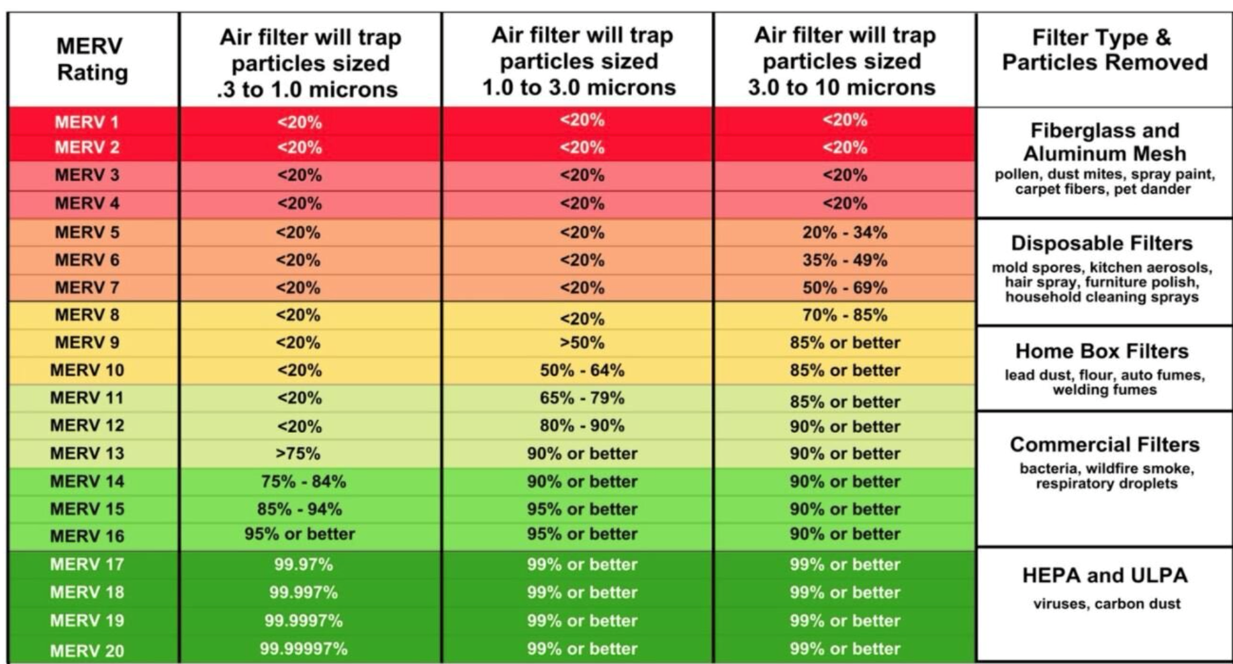
Join Our Newsletter
sales@filterjunkie.com


What is the definition of MERV and what does MERV mean when buying an air filter?
MERV is an acronym for “minimum Efficiency Reporting Value”. The MERV rating on an air filter describes its efficiency as a means of reducing the level of 0.3 to 10 micron-sized particles in the air which pass through the filter. Higher “MERV” means higher filter efficiency. The purpose of the MERV standard is to permit an “apples to apples” comparison of the filtering efficiency of various air filters.
Air filter efficiency refers to the relative ability of a filter to remove particles of a given size or size range from air passing through the filter. If a filter were 100% efficient, none of the particles in a given size range would escape the filter, and air that has passed through such a filter would contain zero particles.
The MERV Efficiency Rating Scale ranges from 1 to 16, with 1 being the lowest efficiency and 16 describing the highest efficiency. The particle size range addressed by the MERV scale is 0.3 to 10 microns. A logical inference is that if an air filter is removing particles down to 0.3-10 microns, it is certainly also at least that efficient at removing larger-sized particles.
HEPA air filters are not MERV rated as they exceed the ASHRAE test protocol 52.2 used in determining the MERV ratings.
In fact, HEPA air filters are the ONLY mechanical air filters that are tested and certified to meet a specific efficiency at a specific particle size, All HEPA air filters must meet a minimum efficiency of 99.97% at 0.3 microns. ASHRAE or MERV air filters are tested using the Dust Spot tests that incorporate some fine dust, powdered carbon, and some cotton linters. The Dust Spot test particle size range is from 0.3 microns to 50 microns in size with an average size of approximately 20 microns in size.
HEPA air filters are tested using DOP, Mineral Oil, and other materials that generate mono-dispersed particles that are all 0.3 microns or smaller in size. In essence, if 10,000 0.3 micron-sized particles are blown into a HEPA air filter, only 3 particles are allowed to pass through. Thus, you get he 99.97% at 0.3 micron rating. If you were to use the HEPA test on a 95% ASHRAE air filter they would be about 50% efficient on 0.3 micron-sized particles once they loaded up with dust. So, HEPA air filters are at least 50% more effective at removing respirable-sized airborne particles than any of the ASHRAE air filters previously available on the market.
